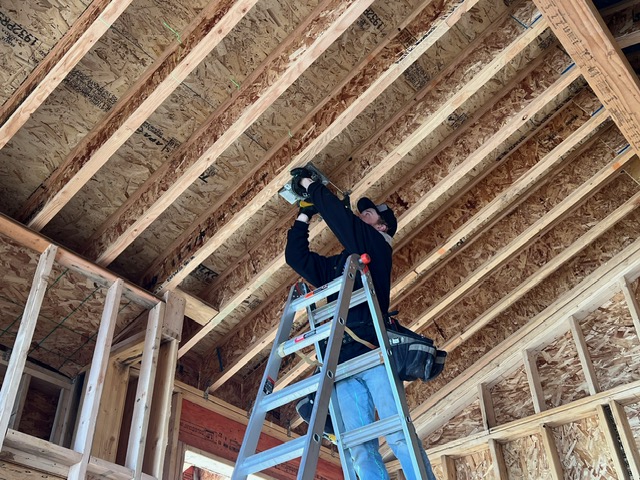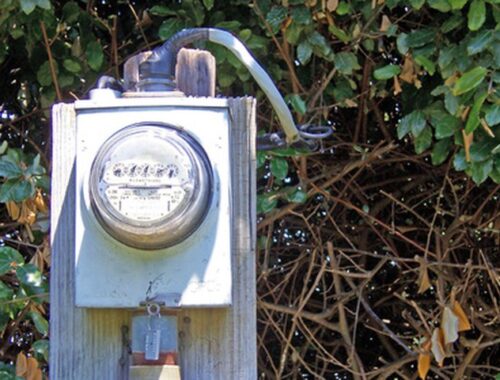
Common Misconceptions About Electrical Work
Electrical work is essential for the smooth operation of our homes and businesses, yet it’s an area fraught with misunderstandings. From safety concerns to DIY projects, misconceptions about electrical work can lead to serious risks and costly mistakes. In this blog post, we’ll debunk some of the most common myths about electrical work and provide you with the truth behind them.
1. Electricity is Too Dangerous for the Average Person
Misconception: Many people believe that electricity is so inherently dangerous that only licensed electricians should handle any and all electrical issues.
Truth: While it’s true that electricity can be very dangerous if not handled properly, understanding basic electrical safety and knowledge can empower homeowners to handle minor tasks safely. For example, resetting a tripped breaker or replacing a light switch can be done safely by following proper procedures. However, any work involving complex wiring, panel upgrades, or troubleshooting power outages should indeed be left to professionals.
2. You Can Use Electrical Tape for Any Electrical Issue
Misconception: Some people think that electrical tape is a catch-all solution for any electrical problem, such as fixing frayed wires or securing connections.
Truth: Electrical tape is useful for insulating minor wire damage or securing wires, but it is not a substitute for proper repairs. If wires are frayed or damaged, they should be replaced or repaired using the appropriate methods. Electrical tape should never be used to cover up serious issues or to patch together broken connections. Always ensure that repairs are made with the right materials and techniques to ensure safety and compliance with code.
3. All Electrical Problems are Easily Identifiable
Misconception: There’s a belief that electrical issues are always obvious and easy to identify, such as flickering lights or tripped breakers.
Truth: Electrical problems can often be subtle and require a trained eye to diagnose correctly. For instance, a flickering light might indicate a loose connection, but it could also be a sign of a more significant issue like a failing circuit or overloaded wiring. It’s crucial to understand that while some issues are visible, others might require diagnostic tools and expertise to resolve. Consulting with a licensed electrician can prevent misdiagnosis and ensure the problem is fixed correctly.
4. DIY Electrical Work is Always a Good Way to Save Money
Misconception: Many homeowners believe that doing their own electrical work is a surefire way to cut costs and avoid expensive electrician fees.
Truth: While DIY projects can save money in some areas, electrical work is an exception. Incorrectly performed electrical work can lead to hazards such as electrical fires or shocks, which can end up being far more costly than hiring a professional. Additionally, improperly completed work might not meet local building codes, leading to potential legal issues or difficulties when selling your home. It’s often more economical in the long run to invest in professional services to ensure safety and compliance.
5. You Don’t Need Permits for Minor Electrical Work
Misconception: Some homeowners assume that minor electrical changes, like adding a new outlet, don’t require a permit.
Truth: Even seemingly small electrical projects typically require permits to ensure that work complies with local electrical codes and safety standards. Permits help to ensure that the work is inspected and verified by qualified professionals, reducing the risk of future problems. Skipping permits can lead to code violations and may complicate future repairs or renovations. It’s always best to check with your local building department before starting any electrical project. If you’re searching for home electrical services, you may visit their webpage to learn more.

6. Old Wiring Doesn’t Need to be Updated
Misconception: An old wiring system is often thought to be safe as long as it’s still working and hasn’t shown any obvious problems.
Truth: Old wiring systems, especially those installed before modern safety standards were established, can pose significant risks. Older wiring may not be able to handle the electrical load of contemporary appliances and electronics, leading to potential overheating or electrical fires. Upgrading to newer wiring can improve safety, energy efficiency, and overall performance. If you live in an older home, having your wiring inspected by a professional is a prudent step.
7. Light Bulbs Can Be Replaced with Any Wattage
Misconception: It’s common for people to believe that they can replace light bulbs with any wattage they like, assuming that all fixtures can handle any bulb.
Truth: Light fixtures are designed to handle specific wattages, and exceeding these limits can cause overheating and potentially lead to a fire. Always check the maximum wattage rating of your fixtures and use bulbs that meet or exceed these ratings. For energy efficiency and safety, consider using LED bulbs, which provide the same amount of light as higher wattage incandescent bulbs but use less energy and generate less heat.
8. Surge Protectors are Enough to Prevent Electrical Damage
Misconception: Some believe that surge protectors alone are sufficient to protect electronic devices and appliances from all types of electrical damage.
Truth: While surge protectors can offer some level of protection against voltage spikes, they are not a catch-all solution. They can be effective against brief power surges, but more severe issues like prolonged power outages or electrical faults may still cause damage. For comprehensive protection, ensure that your home’s electrical system is properly grounded and consider installing whole-house surge protection devices.
9. Circuit Breakers are a Guarantee Against Electrical Fires
Misconception: It’s a common belief that circuit breakers alone can prevent electrical fires.
Truth: Circuit breakers are designed to protect electrical circuits by cutting off power when a fault is detected, but they are not foolproof. They can fail or be improperly rated for certain loads, and they may not detect all types of electrical issues. Regular maintenance and inspections are essential to ensure that your circuit breakers and overall electrical system are functioning correctly. Additionally, addressing any signs of trouble early can prevent potential hazards.
10. Electrical Work is All About Wiring
Misconception: Many people think that electrical work primarily revolves around wiring, and other aspects are secondary.
Truth: Electrical work encompasses a wide range of tasks beyond just wiring. It includes installation and maintenance of electrical panels, outlets, switches, lighting, and grounding systems. Electrical professionals must also stay up-to-date with code changes, safety protocols, and emerging technologies. Understanding the full scope of electrical work highlights the complexity and expertise required in this field.
Conclusion
Electrical work is crucial to our daily lives, but misunderstandings about it can lead to significant risks and problems. By debunking these common misconceptions, we hope to provide a clearer understanding of electrical safety and proper practices. Remember, while some tasks can be safely handled by homeowners, complex or potentially hazardous work should always be performed by a licensed professional. Prioritizing safety and accuracy in electrical work not only protects your property but also ensures the well-being of everyone who uses it.
You May Also Like

Everyday Appliances and Utilities
June 26, 2023
Acne Prone Skin Care Tips
April 1, 2020

